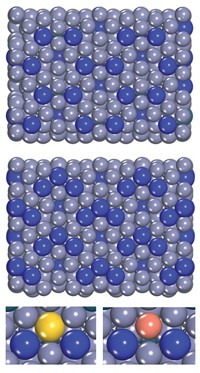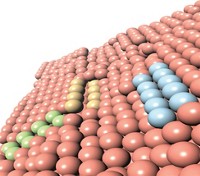Advertisement
Grab your lab coat. Let's get started
Welcome!
Welcome!
Create an account below to get 6 C&EN articles per month, receive newsletters and more - all free.
It seems this is your first time logging in online. Please enter the following information to continue.
As an ACS member you automatically get access to this site. All we need is few more details to create your reading experience.
Not you? Sign in with a different account.
Not you? Sign in with a different account.
ERROR 1
ERROR 1
ERROR 2
ERROR 2
ERROR 2
ERROR 2
ERROR 2
Password and Confirm password must match.
If you have an ACS member number, please enter it here so we can link this account to your membership. (optional)
ERROR 2
ACS values your privacy. By submitting your information, you are gaining access to C&EN and subscribing to our weekly newsletter. We use the information you provide to make your reading experience better, and we will never sell your data to third party members.
Synthesis
Seeking Out Better Catalysts
Lower cost, lower toxicity metals could boost industry sustainability efforts
by Stephen K. Ritter
June 9, 2008

Dozens of cheaper, environmentally friendlier alternatives to precious-metal catalysts have been identified by researchers in a new study (Science 2008, 320, 1320). They are potential replacements for the current workhorses in chemical synthesis, industrial processes, and automobile catalytic converters.
Catalysts made from precious metals such as palladium are critical for facilitating chemical reactions. But these compounds are among the most expensive and in some cases the most toxic chemicals in use today. Organic chemists, particularly those involved in drug discovery and process chemistry research, would be happy to accept cheaper and environmentally friendlier alternatives.
In their study, Felix Studt and Jens K. Nørskov at the Technical University of Denmark and their colleagues used density functional theory (DFT) calculations and catalyst-screening protocols to find non-precious-metal alloys that are effective heterogeneous catalysts for hydrogenating acetylene to ethylene. This important industrial process, which typically uses a palladium-silver cocatalyst system, selectively converts trace amounts of acetylene in ethylene streams before ethylene is polymerized.
The analysis clarified the catalytic mechanism of the reaction and verified that PdAg catalysts are well suited for acetylene hydrogenation. It also identified NiZn alloys as the most viable non-precious-metal alternatives. The team then synthesized and tested a series of NiZn catalysts, finding that two of them, NiZn and NiZn3, have catalyst selectivity and reactivity profiles similar to or better than PdAg catalysts.
But the NiZn catalysts potentially cost thousands of dollars per kilogram less than the PdAg catalysts, the researchers note. And the NiZn catalysts, like most of the non-precious-metal catalysts the team identified, contain metals with relatively low toxicity.
The study "is a very instructive example of how powerful DFT calculations can be in the search for new heterogeneous catalyst candidates," says Carsten Bolm of RWTH Aachen University, in Germany. Bolm's group has been successful in using inexpensive homogeneous iron catalysts to carry out a range of organic reactions.
"It is impressive to see how a detailed theoretical treatment can lead to potential new directions in catalysis, such as allowing the substitution of precious PdAg alloys by highly selective and low-cost NiZn catalysts," Bolm adds.





Join the conversation
Contact the reporter
Submit a Letter to the Editor for publication
Engage with us on Twitter